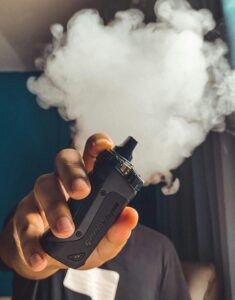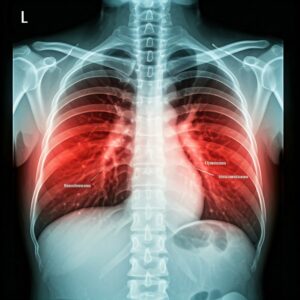
Body movements invariably involve nerves and muscles. The lung serves as the core component of the respiratory system, allowing oxygen to enter the bloodstream while expelling waste gas, namely carbon dioxide. However, the lung itself cannot generate any movement. Changes in lung volumes depend on two mechanisms: one involves altering the size of the thoracic cavity, and the other relies on creating a pressure gradient between the inside and outside of the lung. Both of these mechanisms are driven by muscles. In this post, I will explain the roles of respiratory muscles and how to exercise and strengthen them.
Now, imagine standing in front of a mirror and taking a deep breath. Observe your chest closely. You can easily discern several movements. First, the chest wall moves outward and upward to expand. This expansion forms the anatomical basis of inspiration, creating additional space in the chest and generating a pressure gradient that facilitates the inflow of air into the lungs. Second, the abdomen moves outward. This movement helps shift intraabdominal organs downward, creating more room for the thoracic cavity to expand further. Third, the clavicle (collarbone) moves upward slightly. This subtle movement provides extra force to lift the chest wall.
So, what happens when you exhale? It depends on the force of your exhalation. In a natural state (quiet breathing at rest), exhalation is a passive movement, meaning your muscles do not consume energy. During inspiration, respiratory muscles generate force to expand the chest wall and hemidiaphragm. Consequently, at the end of inspiration, these respiratory muscles are stretched and naturally return to their neutral position. This is how we expel air during exhalation. However, forced exhalation is different. The muscles between the ribs can pull the ribs closer together, reducing the volume of the thoracic cavity. Because the chest wall is relatively rigid, this effect has limitations, and the assistance of abdominal wall muscles is required to expel all the air. Now, let’s closely examine each movement and identify the responsible muscles. The diaphragm is an arch-like muscular structure located between the chest and abdomen, separating the lungs and heart from abdominal organs. When the diaphragm contracts, its dome moves downward, flattening the diaphragm. This action increases the volume in the thoracic cavity. Additionally, the external intercostal muscles elevate the ribs, further expanding the thoracic cavity. During exercise, muscles like the scalene, pectoralis major and minor, trapezius, and neck muscles (sternocleidomastoids) assist in pulling the ribcage up and expanding the thoracic cavity even more. However, when compared to other muscles, the diaphragm provides the majority of the force during inspiration.
Unlike inspiration, expiration at rest is a passive movement. The relaxation of the diaphragm and the recoil of the ribcage push air out of the lungs. Internal intercostal muscles pull the upper ribs closer to the lower ribs, reducing the volume of the thoracic cavity. During exercise, when respiratory rates increase, the duration of expiration shortens. Forceful expiration becomes essential to ensure adequate ventilation. In this case, relaxation of the diaphragm alone is insufficient, and you have to engage your abdominal muscles. A prime example is when you blow up a balloon; you can feel your abdominal wall becoming firm. Abdominal wall muscles, including external obliques, rectus abdominis, transversus abdominis, and internal obliques, generate force to increase abdominal pressure, aid diaphragm recovery, and accelerate the expiration process.
In addition to the mentioned muscle groups, all the muscles in your upper extremities provide a certain degree of assistance during respiratory activities. Although they do not directly generate force during inspiration, they play a role in maintaining your body posture, coordinating your breathing and body movements, reducing energy consumption by respiratory muscles, and indirectly enhancing the efficiency of respiratory muscles.



